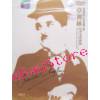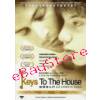
31Jul2025 - 10:28 21 AM
English
The Last Laugh 最卑贱的人 DVD
Code : 9787885727994
| Price : | |
| Weight : | 250 g |
| Staring : | Emil Jannings , |
| Director : | F.W.Murnau , |
| Genre : | Classic , Comedy / Love , |
| Video Format : | NTSC , |
| Discs : | 1 |
| Region Code : | ALL , |
| Model : | DVD , |
The crowning achievement of the German expressionist movement and one of the most notable artworks to arise from the Weimar Republic is Friedrich Wilhelm Murnau's The Last Laugh. Emil Jannings stars in the bleak fable of an aging doorman whose happiness and pride. Through Hannings's colossal performance, The Last Laugh becomes more than the plight of a single doorman but a mournful dramatization of the frustration and anguish of the universal working class, a phenomenon that was further enhanced by the contribution of the director and cinematographer Karl Freund.
Murnau (Nosferatu) and Freund (cinematographer of Top Browning's 1931 Dracula) tempered their realistic depiction of the laborer's downfall with sequences of bold expressionistic design, contorting the doorman's angst into a nightmarish spectacle of the mocking, leering faces and imposing tenement buildings that surround him on his long, shameful walk back to his apartment daily stroll that had once been a ratifying source of self-esteem.
柏林一家豪华旅饭的司阍,因年迈体衰,又得罪老板,被贬为打扫厕所的看守。并被剥夺了上等仆役的金边制服,心中悲痛,几乎想自杀。面对莫大的羞辱,他总是靠撒谎向女儿、未来的女婿、亲朋好友及街访邻里掩盖真相,不愿暴露卑微身份。正当他痛不欲生之际,忽然时来运转,继承了一大笔遗产,成了那家族馆身价百倍的贵客……
本片在1958年比利时布鲁塞尔国际博览会评选的电影诞生以来12部“最佳影片”中,该片名列第十一位。
转载请注明出处,VCDDVD88.com敬上
Murnau (Nosferatu) and Freund (cinematographer of Top Browning's 1931 Dracula) tempered their realistic depiction of the laborer's downfall with sequences of bold expressionistic design, contorting the doorman's angst into a nightmarish spectacle of the mocking, leering faces and imposing tenement buildings that surround him on his long, shameful walk back to his apartment daily stroll that had once been a ratifying source of self-esteem.
柏林一家豪华旅饭的司阍,因年迈体衰,又得罪老板,被贬为打扫厕所的看守。并被剥夺了上等仆役的金边制服,心中悲痛,几乎想自杀。面对莫大的羞辱,他总是靠撒谎向女儿、未来的女婿、亲朋好友及街访邻里掩盖真相,不愿暴露卑微身份。正当他痛不欲生之际,忽然时来运转,继承了一大笔遗产,成了那家族馆身价百倍的贵客……
本片在1958年比利时布鲁塞尔国际博览会评选的电影诞生以来12部“最佳影片”中,该片名列第十一位。
转载请注明出处,VCDDVD88.com敬上






















